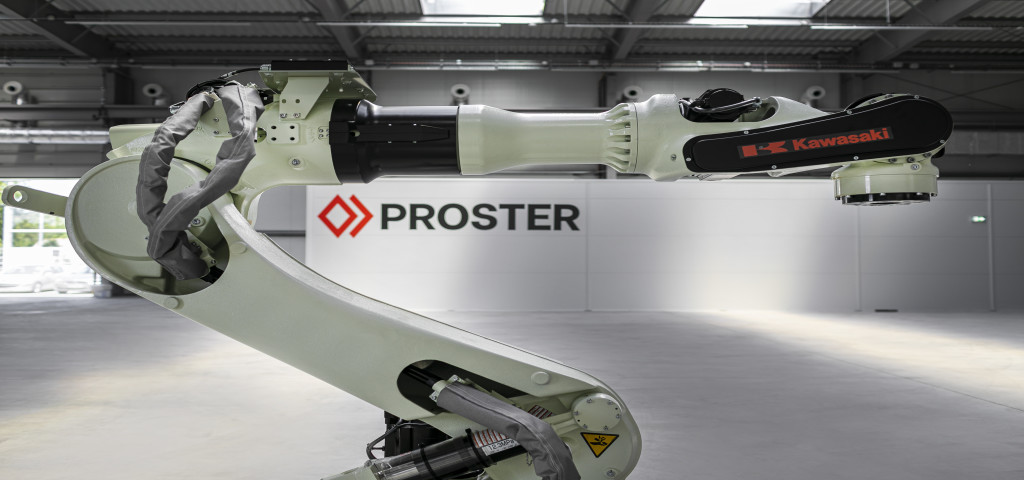Proster articles - sources of professional knowledge
Industry knowledge compiled by specialists for specialists. Benefit from the experience of our experts.
How can the introduction of production automation and robotisation affect the company's finances?

How can the introduction of production automation and robotisation affect the company’s finances?
At the dawn of the third decade of the 21st century, robotisation is no longer a novelty – on the contrary, it is increasingly making its presence felt in production improvement processes, and this is true regardless of the industry involved. There is also a successive increase in the number of small and medium-sized enterprises that see in automation and robotisation not only an opportunity, but, above all, a guarantee of maintaining competitiveness and, consequently, improving financial performance.
Who is it for?
In Poland, the largest percentage of robots is in the automotive industry, where the robotisation density rate in 2019 was 190 robots, compared to 32 in all the other industries. According to “Magazyn Przemysłowy” [Industrial Magazine], in 2020, 982 new industrial robots were installed in automotive companies, a result that was 11% better than the year before. In the plastics and chemical industry, the number of robots in operation increased by 386 units (-5%), and in the metal and machinery industry – by 252 robots (+11%). The largest increase in the number of new installations was recorded by the electrical and electronics industry, which saw 192 new robots in 2019, a result that was as much as 41% better than in 2018. The upward trend has continued over the past few years. According to the portal zrobotyzowany.pl, automation in Poland reaches the global average of 50%. The rates of Japan, the Czech Republic and Hungary, i.e. developed countries, are similar and indicate 53%, 51% and 49%.
It follows that automation and robotics are successful in areas where speed, repeatability and precision of processes are essential. Food production, the cosmetics industry, household appliances, furniture – each of these industries is based on mass production, in which the identical quality of the manufactured product is important.
What for?
The fundamental reason for automating and robotising production processes in companies is the desire to increase the volume of manufactured products. Unlike human labour, the robotic system allows the products to be of identical quality regardless of the conditions under which its manufacture occurred. There is also the possibility of the robot reacting with its surrounding environment using force sensors or vision systems. The result is a significant reduction in material losses so often generated during manual work. The implementation of robots also makes it possible to estimate more precisely the time and resources needed to achieve a certain quality, so you can define more precisely when (and for how much) a given task will be completed. Finally, a consequence of automation and robotisation is a change in the employment structure – low-skilled employees are being replaced by educated people with a high degree of specialisation that allows them to work in a high-tech environment. It is also a way to make the company independent of worker shortages caused either by their migration out of the country or the constraints of the epidemic state the global economy has been facing since March 2020. Contrary to speculation, the currently ongoing Covid-19 outbreak has increased interest in automating and digitising production.
What is the cost?
There is no doubt that the number of advantages resulting from automation and robotisation of production clearly outweighs the costs of its introduction, translating directly into an improvement in finances. Greater efficiency, combined with good quality, means shorter turnaround times for orders, which can be fulfilled more, generating more turnover and, consequently, more profit. The cost of human error due to fatigue, monotonous work, inadequate qualifications or other factors is reduced to a minimum or completely eliminated. However, in order for this to happen, deciding to purchase a robot should be a thoughtful process in which several key questions must be answered: – What process is to be performed using the robot? What kind of environment is the robot supposed to work in? What will be the intensity of its use? What detail will it work on? And finally – what kind of efficiency would we like to achieve?
Such an in-depth analysis will allow you to make a well-considered purchase, the costs of which will pay off in no time. In this context, an interesting novelty in the automation and robotics market seems to be the so-called cobots, i.e. robots that cooperate with humans. Their most important advantage is that fewer accessories are needed to create such a station, and their implementation and programming is more intuitive than in the case of classic units – so there is no need for any special training for employees. Cobots, due to their compact size, work well in plants with limited space. Therefore, there will be no need for additional costs to adapt the plant to the new production process. All this translates into lower costs and, consequently, more profit. The state’s support of entrepreneurs in their effort to implement new technologies also appears to be significant. The countries where such support is strongest are China, Japan, the United States and Germany. It takes the form not only of various types of subsidies, but also of organising cooperation between companies and scientific entities to develop and implement increasingly technologically advanced solutions. In Poland, such assistance takes the form of, for example, a research and development tax credit. This is a fiscal instrument that allows CIT and PIT taxpayers to double-deduct qualified costs incurred for research and development activities (e.g., construction of modern automated and robotic production lines) from the tax base. The company can use a given R&D expense for tax purposes at 200% – recognizing it as a deductible expense (100%), and then writing off 100% of the same expense from the already calculated tax base. There are many mechanisms to support Polish entrepreneurs, it remains to choose the one that is most appropriate to the business profile and the objective the entrepreneur has set.
The authors of the article: Jarosław Tynka and Marzena Fijałkowska.
Bibliography:
- https://www.magazynprzemyslowy.pl/artykuly/robotyzacja-przemyslu-w-polsce-i-na-swiecie-bieg-z-przeszkodami
- https://zrobotyzowany.pl/informacje/publikacje/3614/automatyzacja-w-polsce-szanse-obawy-i-zagrozenia
- „Magazyn Przemysłowy”[Industrial Magazine], issue 6-7 (212), June-July 2021
